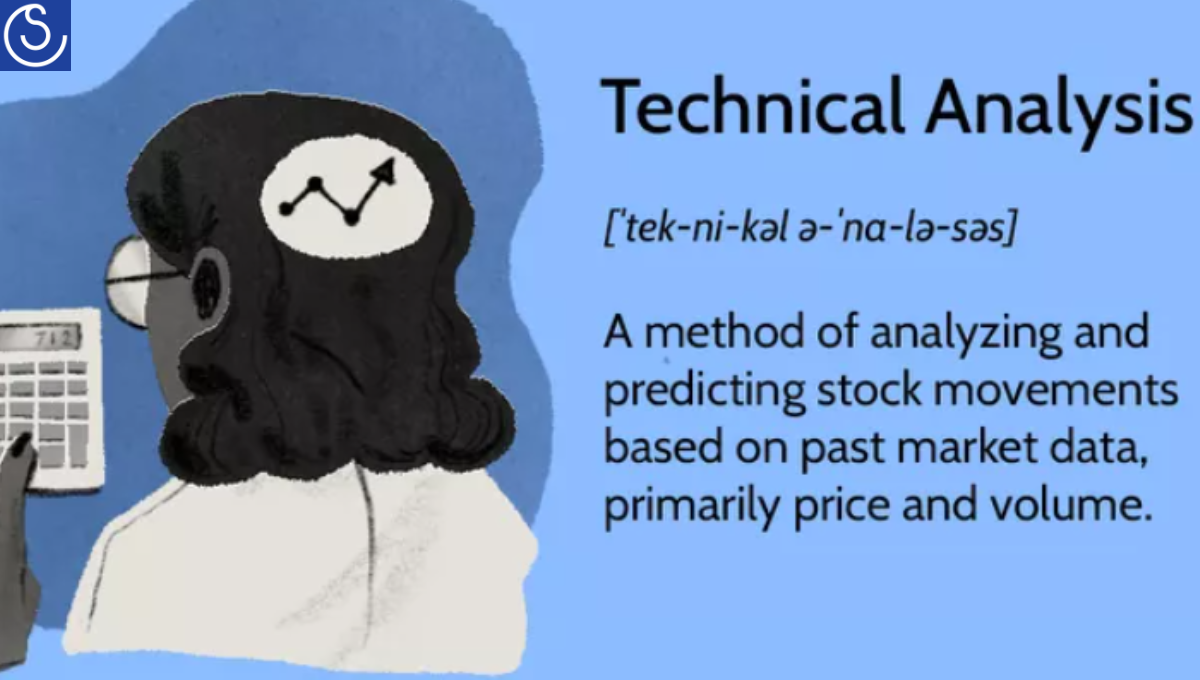Importance of Technical Analysis:-
Overview: Importance of Technical Analysis uses historical price movements on charts to forecast future prices in financial markets. It is possible to identify market trends using technical analysis, regardless of whether they are sideways, upward, or downward.
Table of Contents:
| What is Technical analysis? |
| Understanding Technical Analysis: |
| Using Technical Analysis: |
| Indicators of Technical Analysis: |
| Technical Analysis’s Limitations: |
| In conclusion: |
Importance of Technical Analysis
Technical analysis is a form of trading that uses statistical trends gleaned from trading activity, such as price fluctuations and volume, to assess investments and pinpoint trading opportunities. Importance of Technical Analysis and how it’s important for the stock market is concerned with the analysis of price and volume, as opposed to fundamental analysis, which looks at a security’s value in relation to financial indicators like sales and earnings.
KEY TAKEAWAYS:
- A trading discipline called technical analysis is used to assess investments and spot trading opportunities in price movements and patterns on charts.
- According to technical analysts, historical trading activity and price fluctuations of an asset might serve as useful predictors of future price movements.
- Fundamental analysis, which highlights a company’s finances over past price patterns or stock movements, can be combined with technical analysis.
Understanding Technical Analysis:
Using Importance of Technical Analysis tools, one can examine how changes in a security’s supply and demand will impact changes in price, volume, and predicted volatility. It is predicated on the idea that, when combined with suitable trading or investment rules, historical trading activity and price fluctuations of a security can be useful predictors of the security’s future price movements.

It can help enhance the assessment of a security’s strength or weakness in relation to the market as a whole or one of its sectors. It is frequently used to produce short-term trading signals using various charting tools. Analysts can enhance their overall valuation estimates with the use of this information.
Charles Dow and the Dow Theory created technical analysis as we know it today in the late 1800s.
John Magee, Edson Gould, Robert Rhea, William P. Hamilton, and other prominent researchers added to the ideas that formed the foundation of Dow Theory. As a result of years of research, hundreds of patterns and signals are now included in technical analysis.
Using Technical Analysis: (Importance of Technical Analysis)
Importance of Technical Analysis is commonly employed by experienced analysts in addition to other types of investigation. Although price charts and comparable data may be the only sources of information used by retail traders, professional equity analysts never restrict their investigation to fundamental or technical analysis.
Any security that has past trading data can be subjected to technical analysis. This covers equities, futures, commodities, currencies, fixed-income, and other assets. Importance of Technical Analysis – Technical analysis is really significantly more common in FX and commodities markets since traders there are more interested in short-term price changes.
By using supply and demand to drive price movement, technical analysis aims to predict price movement of almost any tradable instrument, such as currency pairings, stocks, bonds, and futures. Technical analysis, in fact, is seen by some as little more than the examination of supply and demand dynamics as they relate to changes in a security’s market price.
Although price fluctuations are the most typical subject of technical analysis, some analysts also monitor additional indicators like trade volume or open interest statistics.
Indicators of Technical Analysis:
Researchers have produced hundreds of patterns and signals to enhance technical analysis trading across the sector. To assist in their forecasting and trading of price fluctuations, technical analysts have also created a wide range of trading systems.
While some indicators are primarily concerned with identifying the current market trend, including areas of support and resistance, others are more concerned with assessing the strength of a trend and its chances of continuing. Trendlines, channels, moving averages, and momentum indicators are examples of frequently used technical indicators and charting patterns.
Technical analysts typically examine the following main categories of indicators:
- Trends in prices
- Chart patterns
- Volume and momentum indicators
- Oscillators
- Moving averages
- Levels of resistance and support
Technical Analysis’s Limitations:
According to the EMH, historical price and volume data shouldn’t include any useful information, as some analysts and academic scholars anticipate; on the other hand, business fundamentals shouldn’t either, based on the same logic. The weak form and semi-strong form of the EMH are the names given to these opinions.
Price pattern research is of low value and might be rejected since history does not repeat itself perfectly, according to another complaint of technical analysis. It appears that modeling prices with a random walk is more accurate.
Technical analysis is criticized thirdly for its ability to be effective only in situations when it becomes self-fulfilling. For example, a lot of technical traders may set a stop-loss order below a company’s 200-day moving average. If a lot of traders have done this and the stock hits this level, a lot of sell orders will come in, pushing the price down and validating the movement that traders were expecting.
As a result of seeing the price drop, other traders will also sell their holdings, so bolstering the trend’s power. Although the short-term selling pressure may be self-fulfilling, it won’t have much of an impact on the asset’s price in the next weeks or months.
In conclusion:
A small number of traders may be able to influence a signal’s movement if enough people follow it, but ultimately, the price can’t be established by a single group of traders. (Importance of Technical Analysis)
Also Read:
